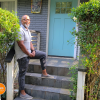The number of multiracial residents in the Greater Boston area more than doubled since 2000, according to a new report with “startling” findings.
The report from Boston Indicators, the research center at the Boston Foundation, found that the region’s multiracial population grew from around 111,000 to almost 250,000. The major and rapid shift in demographics can be found at the family level: One in five babies born in 2019 was of either mixed race or mixed ethnicity — more than any other single race, apart from white, the report found.
“It’s just quite startling,” said Trevor Mattos, one of the report’s co-authors. “When you start to see this trend ... it says, ‘Wow, this is not the Boston of the ’90s or the ’80s. You know, this isn’t even the Boston of the early 2000s. We’re really in a new era of our racial and demographic transformation. It’s no longer just this diversity in the aggregate, we’re starting to see it at the level of the household, in the family.”
More Local News
The analyses relate to the “the most personal aspects of someone’s identity,” he said. Mattos himself grew up in southeastern Massachusetts and is of mixed Latino ethnicity — the same demographic that accounted for more than half of all multiracial and multiethnic babies born in 2019. A quarter of those babies had one Black and one white parent.
“This is who you are,” he said. “The way someone expresses their mixed identity is affected by so many different things, and so it's sort of the sum total of these very personal and emotional experiences that you have — the parts of your family that you spend the most time with, the way that you're perceived by others.”
Mattos thinks the shift could offer hope and a counternarrative to racial divides. “But at the same time,” he said, “for some people, it really can stir up fear, resentment. It can lead to heightened, xenophobic or racist sentiments.”
While it’s not the responsibility of multiracial families to reduce racial conflict, said Mattos, he thinks there are powerful examples of leaders in the region who bring people together and perhaps offer a “preview of what a multicultural society that is more affirming of all racial and ethnic identities could look like.”
Professor Peter Kiang, the director of Asian American Studies Program at UMass Boston, cited examples of multiracial local leaders, such as Suffolk County District Attorney Rachael Rollins.
“Someone like D.A. Rollins is very, very clear and explicit in her understanding of what her background represents and how she draws on it professionally, and in the community as a change agent in society,” Kiang said.
“I don't think it is the sole purview of the multiracial population either to represent that or to make that happen,” he added. “I think anyone can actually do that if they're thoughtful.”
WATCH: New study shows significant growth in multi-racial families in Greater Boston area







